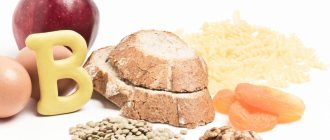In 1931, researcher Lucy Willis discovered that yeast extract helped improve the condition of pregnant women suffering from anemia. Later, a substance called vitamin B9 was isolated from it.
Several decades ago, another scientist was making progress in the field of agricultural development. He fed the chickens various beneficial substances and found among them one that led to intensive growth in the experimental subjects. It has been identified as chicken growth factor, or vitamin Bc (chicken).
Later, folic acid (and in both cases it was precisely this) became indispensable in health care. Having many useful functions, it is very important for the health of every person. It is recommended to add foods enriched with vitamin B9 to the daily diet, and if necessary, folic acid can also be used in medications.
Foods rich in vitamin B9
Vitamin B9 is mainly found in plant foods, and most of it is found in the green parts of plants and their leaves.
Lettuce, spinach, cucumbers, and cereal sprouts are rich sources of folic acid. It is also found in non-green fruits, cereals, wholemeal flour, legumes, and yeast.
Folic acid is secreted in minimal quantities by intestinal microflora.
Of the animal products that contain folacin, honey is actually the only one.
Dosage of the drug
Daily dosages of B9 for women are 0.2-0.4 milligrams per day. The exception is during pregnancy, in which case the dosage is selected by the doctor. A man prone to folic acid deficiency should receive 1 mg per day. Elderly people - 0.4 mg. As a rule, each tablet contains about two daily doses of the drug, but today you can buy dietary supplements in Moscow with a different choice of dosages.
The dose for a child depends on his age. Breastfed children do not need additional intake of this vitamin. Children under 3 years old are given 70 mcg daily, from 4 to 6 years old - 0.1 mg. Then every three years the dosage is increased by 0.05 mg, reaching 0.3 mg by the time the child reaches adulthood. Before you introduce this substance into your child's diet, consult your pediatrician. If you identify signs of a drug overdose, just stop taking it; this does not require special treatment.
Biological role of vitamin B9
Folic acid enables many processes necessary to maintain life.
Functions of vitamin B9:
• Participates in the formation of DNA molecules - the genetic material of cells! That is why folic acid is necessary for children for growth and development, and for adults to prolong youth and improve health. • Actively participates in the processes of formation of the fetal body. Dozens of large international studies have been conducted that have confirmed that the use of vitamin B9 by pregnant women reduces the risk of developing neural tube defects and other defects in children. • Plays a vital role in hematopoiesis. Sometimes the most “invincible” anemias, which are not treated either by the use of iron supplements or by the use of vitamin B12, recede under the influence of folic acid therapy. • Heals the liver, promotes its normal functioning. • Reduces the risk and rate of development of atherosclerosis. • Promotes the production of healthy sperm.
Vitamin B9 (folic acid) is a water-soluble vitamin necessary for the synthesis of DNA and some amino acids (glycine, methionine).
Synonyms Russian
Folic acid, folacin, pteriolglutamic acid.
English synonyms
Vitamin B9, vitamin Bc, folic acid, folacin, pteroylglutamic acid.
Research method
Competitive enzyme-linked immunosorbent assay.
Determination range: 1.36 - 90.8 nmol/l.
Units
Nmol/L (nanomoles per liter).
What biomaterial can be used for research?
Venous blood.
How to properly prepare for research?
- Do not eat for 2-3 hours before the test; you can drink clean still water.
- Avoid physical and emotional stress 30 minutes before the test.
- Do not smoke for 30 minutes before the test.
General information about the study
B9 is a water-soluble vitamin. It was first isolated from spinach leaves, but 20 years earlier the role of liver and yeast in the treatment of megaloblastic anemia, a condition that develops with B9 deficiency, was established.
Vitamin B9 enters the body with food. It is found in beans, parsley, lettuce, cabbage, tomatoes, spinach, asparagus, liver, kidneys, meat, mushrooms, yeast and is destroyed at high temperatures. Part of vitamin B9 is produced by intestinal microflora in the presence of para-aminobenzoic acid. In addition, the liver and kidneys have reserves of folacin that can compensate for insufficient supply for several months.
B9 is absorbed in the small intestine: biochemical transformations of the vitamin occur in its mucosa with the formation of active forms that can pass into the blood and participate in biochemical reactions. The role of B9 in the body is its ability to transfer a methyl residue (CH3-) - these are reactions during which DNA and some amino acids (glycine, methionine) are formed.
With hypovitaminosis, DNA synthesis slows down and abnormal DNA appears, which easily decays due to the replacement of thymine nucleotides with uridine ones. With this disorder, the cells and tissues that are frequently renewed, such as blood and epithelium, are primarily affected, which determines the symptoms of folic acid hypovitaminosis.
Megaloblastic anemia develops, which is manifested by pallor, weakness, fatigue, and atypical cells are visible in a blood test. In addition, the number of other blood elements - platelets and leukocytes - decreases and their abnormal forms appear.
Another tissue that suffers from a lack of B9 is the epithelium: wounds heal more slowly, the gastrointestinal tract suffers - the production of enzymes necessary for digestion decreases, glossitis (damage to the tongue), esophagitis (damage to the esophagus), gastritis, and enteritis develop.
It is important to distinguish megaloblastic anemia caused by folate deficiency from that caused by vitamin B12 deficiency. In the second case, large doses of folate are able to correct disturbances in the patient’s blood, but neurological complications progress.
In addition to the formation of DNA, vitamin B9 is involved in the production of methionine from homocysteine. With hypovitaminosis, the amount of homocysteine increases, which increases the likelihood of cardiovascular diseases.
A sufficient level of folate in the body reduces the risk of developing cancer and plays a special role during pregnancy, especially in the early stages - intensive cell division occurs in the fetus, future organs and tissues are formed, the correct formation of the neural tube is especially important. Disruption of these processes leads to developmental defects: deviations of the nervous system (anencephaly, hydrocephalus, spina bifida), impaired formation of limbs, and heart defects. In addition, B9 deficiency during pregnancy can cause improper formation of the placenta and even termination of pregnancy.
A person needs 25 mcg of B9 per day, but losses during absorption increase the amount that should be supplied with food to 50 mcg. The need for B9 increases during pregnancy and lactation, as well as with malignant tumors, some types of hemolytic anemia and skin diseases.
It is important to remember that the instability of the vitamin to cooking can lead to its deficiency in food. In addition, the development of hypovitaminosis is likely due to malabsorption - due to the abuse of alcoholic beverages and acidic foods, taking certain medications (barbiturates, phenytoin), and malabsorption syndrome.
At the same time, an excess of B9 is extremely unlikely, since, being water-soluble, the vitamin is excreted in the urine.
What is the research used for?
- To find out whether B9 deficiency is the cause of megoloblastic anemia, glossitis, esophagitis, atrophic gastritis, enteritis.
- For the differential diagnosis of megaloblastic anemia caused by hypovitaminosis B9 and B12.
- To assess the level of vitamin B9 when planning pregnancy or malabsorption syndrome.
- To develop recommendations for nutrition correction.
When is the study scheduled?
- For megoloblastic anemia, glossitis, esophagitis, atrophic gastritis, enteritis.
- As part of a comprehensive assessment of the body’s vitamin profile.
- When it is important to prevent B9 deficiency (during breastfeeding, hemodialysis).
- When planning pregnancy (to prevent congenital malformations, especially of the nervous system).
- For malabsorption syndrome (to diagnose possible vitamin B9).
- When monitoring the effectiveness of treatment of hypovitaminosis.
What do the results mean?
Reference values: 7 - 39.7 nmol/l. Reasons for increasing B9 levels:
- overdose of drugs containing vitamin B9 (multivitamins, mamifol, folic acid, folacin).
Reasons for decreased B9 levels:
- insufficient intake of vitamin from food (fasting, predominant consumption of cooked food),
- poor absorption of B9 in the intestines,
- increased need for vitamin B9 (pregnancy, breastfeeding, hemodialysis, cancer).
What can influence the result?
Before the analysis, it is necessary to take into account the fact that you are taking vitamin B9 medications.
Signs of vitamin B9 deficiency
With a lack of folic acid, the condition of the skin worsens, anemia may develop, various problems in the digestive tract begin to bother us, sometimes bleeding gums appear, and existing chronic diseases are more likely to worsen.
When taking vitamin B9, all these symptoms soon disappear.
In pregnant women, folic acid deficiency manifests itself much more severely and sometimes even catastrophically.
The main symptoms are anemia and developmental defects in children.
Historical information
The discovery of folic acid is associated with the search for a method of treating megaloblastic anemia.
In 1931, scientists discovered that adding liver extracts and yeast to a patient’s diet helps eliminate the symptoms of the disease. In subsequent years of research, it was recorded that a condition similar to macrocytic anemia progresses in chimpanzees and chickens when fed refined food. At the same time, the pathological manifestations of the disease were eliminated by adding alfalfa leaves, yeast, and liver extracts to the feed. It was clear that these products contain an unknown factor, the deficiency of which, in the body of experimental animals, leads to impaired hematopoiesis.
As a result of three years of numerous attempts to obtain the active principle in its pure form, in 1941 scientists isolated substances of the same nature from spinach leaves, yeast extract and liver, which they named: folic acid, vitamin bc, factor U. Over time, it turned out that the resulting compounds were identical to each other to a friend.
The period from the discovery of folacin to its isolation in its pure form is characterized by intensive research of the compound, starting with the study of its structure, synthesis, and ending with the determination of functions, as well as metabolic processes in which the substance takes part.
What vitamins contain folic acid?
Special multivitamins for pregnant women contain a loading dose of folin, so you cannot take such drugs on your own without a doctor’s recommendation.
To prevent possible problems for the expectant mother, doctors prescribe special medications containing vitamin B9:
- "Folic acid" - one tablet contains 1000 mcg of vitamin B9.
- "Foliber" with vitamin B12. Each tablet contains 400 mcg of folic acid.
- "Folic acid" with B6 and B12. One tablet contains 600 mcg of folic acid, 5 mcg of vitamin B12, and 6 mg of vitamin B6. This drug is a dietary supplement.
- Complex vitamin preparations with folic acid containing: “Multi-tabs perinatal” (400 mcg), “Pregnavit” (750 mcg), “Elevit” (1000 mcg), “Vitrum Prenatal” (800 mcg), “Materna” (1000 mcg).
“Folio” with iodine contains 400 mcg of B9 and 200 mcg of iodine.
Features of the intake and absorption of folic acid
Vitamin B9 deficiency is often accompanied by a number of diseases of the gastrointestinal tract - celiac disease, gastritis, malabsorption, since this element is poorly absorbed in this case. A lack of folic acid for the same reason can occur when using certain medications:
- glucocorticosteroids,
- aspirin,
- antacids,
- nitrofurans,
- contraceptive drugs.
The following diseases require special attention from a doctor when prescribing folic acid supplements:
- disorders of the kidneys;
- anemia;
- overweight with a BMI of 30 or higher;
- history of spontaneous miscarriages from previous pregnancies;
- diabetes mellitus, both type 1 and type 2;
- taking medications, one of the components of which is valproic acid;
- alcohol abuse.
Be sure to tell your doctor if you have at least one of these aggravating circumstances. He will adjust the dosage and dosage regimen in accordance with the existing diseases.
Chemical and physical properties
Composition of the vitamin B9 molecule:
- P-aminobenzoic acid;
- pteridine derivative;
- L-glutamic acid.
Due to the fact that the term “pteroylglutamic acid” refers to a broad group of compounds, this caused some inconvenience during research, since not all categories of substances represented biological activity for living organisms, in particular for humans. Therefore, scientists decided to specify the concepts. Thus, the committee of the International Society assigned the name “folates” to the group of compounds that contain pteroic acid nuclei, and the term “folacin” to substances with the biological activity of tetrahydropteroylglutamic acid.
Thus, the concepts “folic” and “pteroylglutamine” group are synonymous. At the same time, folate is the chemical name for “related” compounds to vitamin B9.
Folic acid is a yellow, finely crystalline powder, tasteless and odorless. When heated, the crystals of the compound slowly darken, but do not melt; a further increase in temperature to 250 degrees leads to their charring.
Vitamin B9 quickly decomposes in light. At a temperature of 100 degrees, 50 milligrams of a substance dissolve in 100 milliliters of water; at zero – one unit. Folacin breaks down easily in caustic alkalis, but poorly in dilute hydrochloric and acetic acids, ether, chloroform, alcohol, acetone, benzene, and organic solvents. Silver, zinc, and lead salts of vitamin B9 are insoluble in water.
Folacin is well adsorbed by fuller's earth and activated carbon.
Side effects
The development of side effects occurs only when there is a lack or excess of folic acid, when the dosage of the drug is chosen incorrectly or, conversely, it is not absorbed enough, entering the blood in small quantities.
Deficiency causes anemia, and excess leads to a drop in cyanocobalamin (vitamin B12) levels. Lack of B12, in turn, leads to neurological complications.
An allergy to folic acid can occur due to individual intolerance to the components in its composition. Serious manifestations of allergies are possible: Quincke's edema, skin rash, anaphylactic shock. When the first signs appear, it is important to take an antihistamine.
Like any other vitamin, folic acid is vital for the proper functioning of our body. But there is no need to panic, trying to detect signs of its deficiency. It is enough to eat right, introducing green vegetables and other foods rich in this important compound into your diet.









